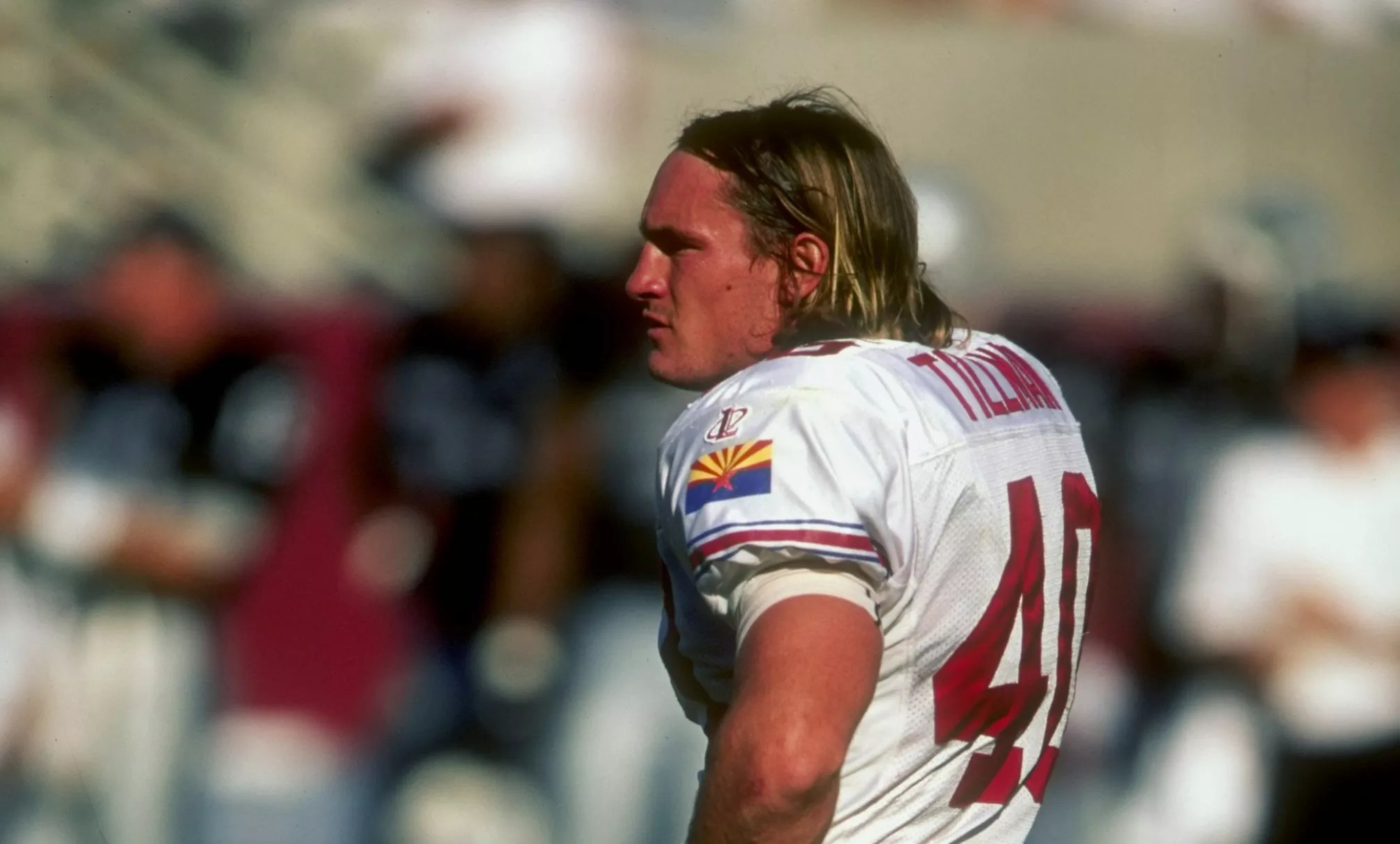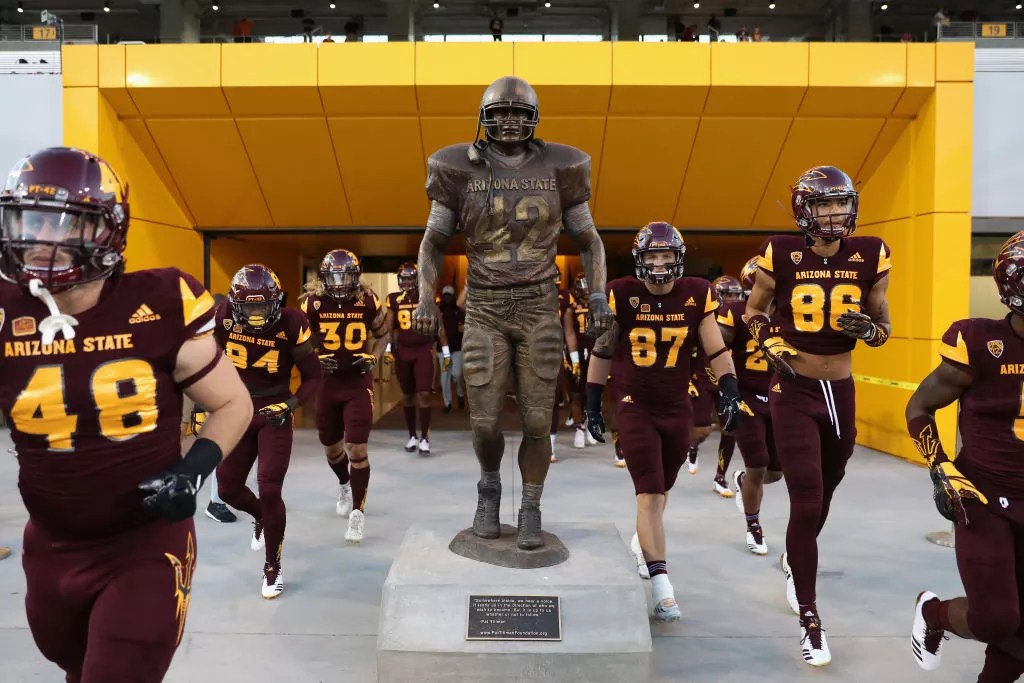
Todd Warshaw/Getty Images

Audio By Carbonatix
It’s been 20 years and seven months since Pat Tillman’s death, and it would seem safe to assume there is not much new we could learn about him.
His journey – his football stardom at Arizona State University and with the Arizona Cardinals, his decision to leave the NFL and become an Army Ranger, and ultimately his death by friendly fire in Afghanistan – has been well chronicled. At least six books have been written about Tillman. Numerous documentaries and other television specials have been produced.
A bridge, an elementary school and probably at least a few hundred kids are named after him. There are statues of Tillman at State Farm Stadium and at ASU. A foundation bears his name, and the annual Pat’s Run in Tempe is one of Arizona’s biggest events.
Tillman’s story is compelling, and people understandably can’t get enough of it. There are no eye rolls when another author or documentarian decides to tell it again.
Phoenix, make your New Year’s Resolution Count!
We’re $12,500 away from reaching our $30,000 year-end fundraising goal. Your support could be what pushes us over the top. If our work has kept you informed, helped you understand a complex issue, or better connected you to your community, please consider making a contribution today.
That’s good, because the latest effort – an ESPN “E60” episode titled “Pat Tillman: Life. Death. Legacy.” – is well worth an hour of your time. That’s especially true of the last 30 minutes, which includes interviews from several of Tillman’s platoon mates who were there when he was killed.
The episode airs at 5 p.m. on Thursday, four days before Veterans Day.
The first half of the episode contains the background most of us know: Tillman’s life growing up just outside San Jose, California, and his rise to stardom at ASU. Doug Tammaro, a close friend of Tillman’s and now senior associate athletic director for media relations at ASU, called Tillman arguably the finest student-athlete in the university’s history, and it’s hard to argue the point. As a senior, Tillman was Pac-10 defensive player of the year and graduated in three and half years with a 3.95 GPA.
Tillman’s four NFL seasons are told through former Cardinals defensive coordinator and head coach Dave McGinnis, a gifted storyteller who could make you laugh or cry by reciting a recipe for chicken-fried steak. Having spent 25 seasons as the Cardinals beat writer for the Arizona Republic, I would know.
I was one of three reporters summoned to meet with McGinnis in spring 2002.
“Pat Tillman is joining the Army,” he told us. Tillman was passing on a three-year, $3.6 million deal to do so. “It’s not a snap decision,” the coach continued after advising one reporter that his jaw had dropped to the floor. “You’re not dealing with a guy who’s real shallow. You’re dealing with a guy whose waters run pretty deep.”
Friendly with the media as a player, Tillman avoided us as a soldier. He politely declined interview requests. Stationed in Ft. Lewis, Washington, he visited Cardinals coaches and players before a 2003 game in Seattle, taking care not to bump into reporters.

Arizona State University football players run past the Pat Tillman statue before a 2017 game.
Christian Petersen/Getty Images
Heart-wrenching interviews
By then, Tillman had grown disillusioned with the Army and the reality of what he was seeing on the ground. “He just said, flat-out, ‘This is illegal, what we’re doing over here,'” Tillman’s mother, Mary “Dannie” Tillman, says in the episode.
Tillman’s final deployment was to Iraq, leaving in March 2004. A month later, Tillman’s platoon was sent on a fateful mission near the Pakistan border. It’s here that the episode becomes more than just another Tillman recounting.
ESPN’s Jeremy Schaap tells the story of Tillman’s death through emotional and impactful interviews with Tillman’s platoon mates, asking short questions that elicit insightful answers.
The platoon’s stated objective that day was to find Osama Bin Laden. In reality, fellow Ranger Steven Elliott tells Schaap, the real goal seemed to be to drive around, get shot at and create intelligence that could be used to find “bad guys.”
Get shot at they did. Following orders, the platoon split in two and was towing a broken-down Humvee when it was attacked. Tillman and two others climbed a ridgeline and were mistakenly identified as the enemy. Elliott was one of four people to fire in their direction.
Elliott’s interview is heartbreaking. Schaap asks Elliott what the platoon could have done differently that day.
“I think everybody in the platoon has spent 20 years asking that question,” Elliott responds.
The Army initially said Tillman was killed by the enemy, which was a lie that sparked several investigations. One of them was supervised by former Secretary of the Army Pete Geren, whom Schaap questions sharply.
“You can call it whatever you want,” Geren says when asked if there was a coverup. “They lied.”
The impact the saga had on Tillman’s platoon mates was profound. The episode notes that many of them dealt with depression, addiction and suicidal thoughts for years.
“Every year when I get a calendar, I put Pat’s name on the calendar,” says Eric Godec, a sergeant in the platoon, his voice breaking.
“I probably thought a million times this world would be much better if Pat had made it and I had died,” says Bryan O’Neal, who followed Tillman up the ridge that day. “That was always my go-to, survivor’s guilt.”
I thought I had read and watched every account of Tillman’s death. But listening to the impact it still has, decades later, on his friends in the platoon was new and gut-wrenching. It’s hard to watch, but worth it.
Near the end of the episode, platoon mate Don Lee rhetorically asks how Tillman would want to be remembered. As a hero? A patriot?
I won’t spoil his answer here. But it perfectly sums up why, 20 years after his death, Pat Tillman maintains such a hold on Arizona.